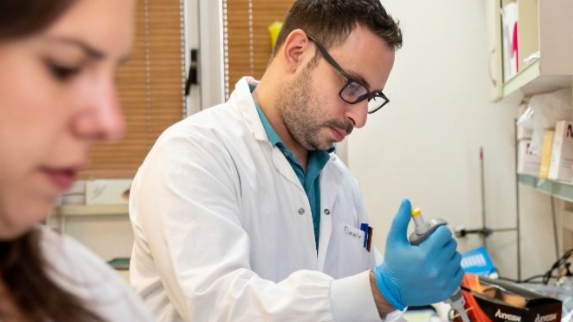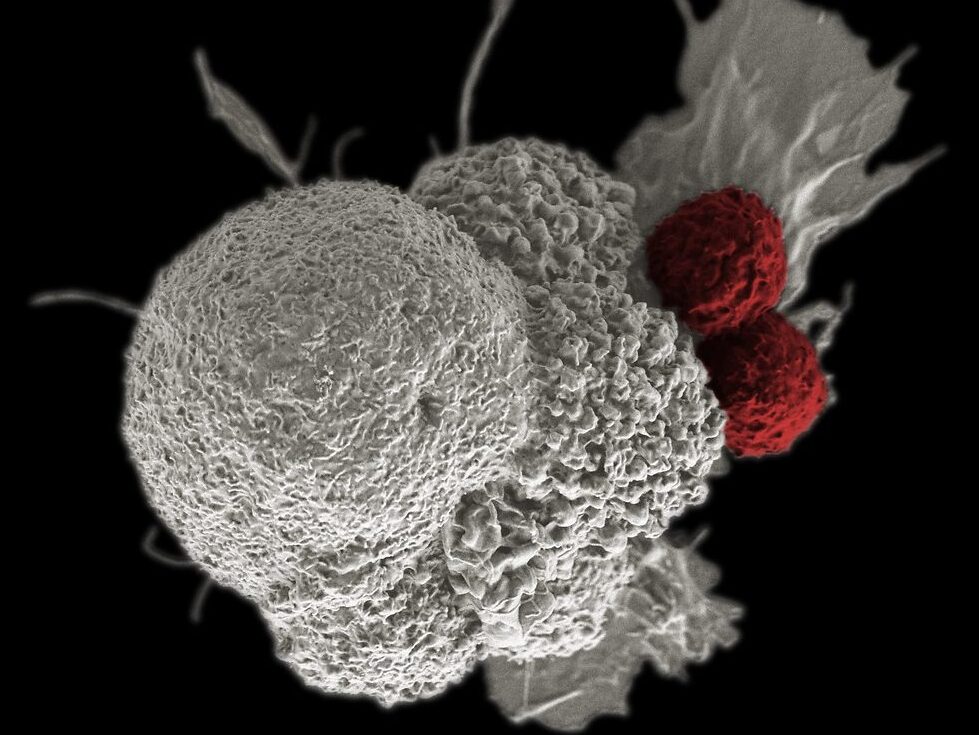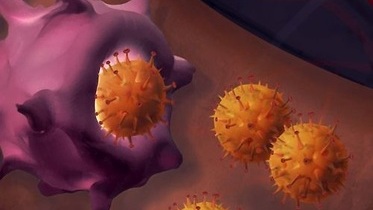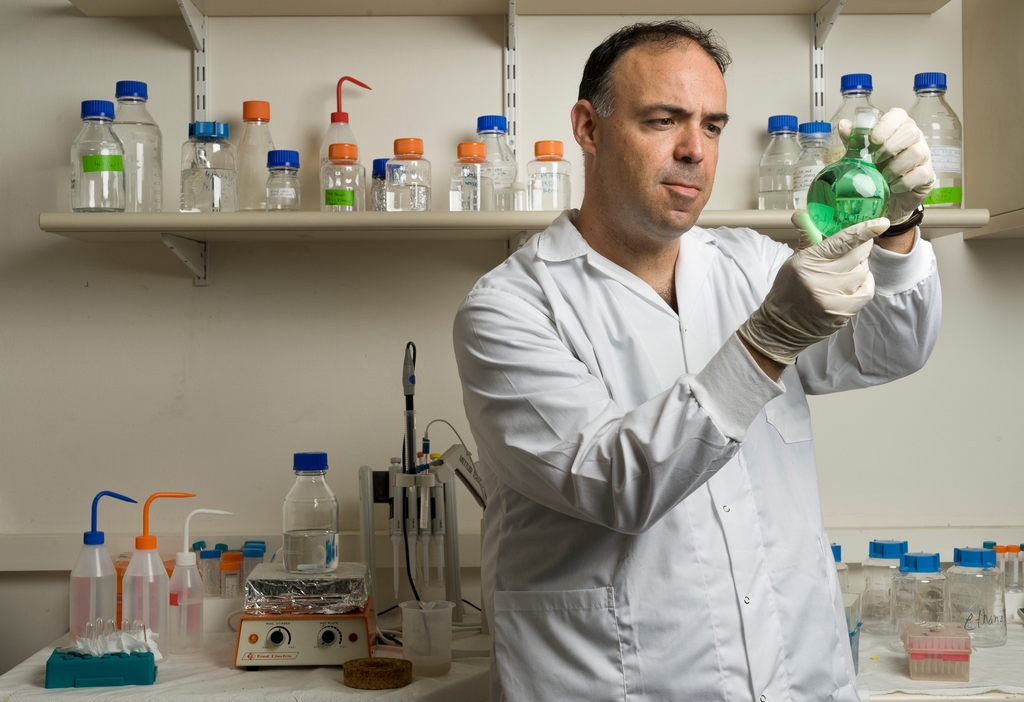Israeli scientists have developed a cutting-edge nanotechnology system that can destroy cancerous cells in mice and could potentially be effective on humans.
The Tel Aviv University team of researchers pioneered the treatment method that is so precise, it is apparently as if tiny molecular scissors were being used to kill even the most aggressive metastatic cancer cells.
4 View gallery


Dr. Daniel Rosenblum and doctoral student Anna Gutkin at work at Tel Aviv University's Laboratory of Precision NanoMedicine
(Photo: Tel Aviv University)
“We developed a delivery system for these molecular scissors that can specifically reach tumor cells while leaving normal cells intact,” Dr. Daniel Rosenblum, a postdoctoral fellow from the Laboratory of Precision NanoMedicine at the Shmunis School of Biomedicine and Cancer Research at Tel Aviv University, told The Media Line.
“By cutting their DNA in specific genes that are responsible for cell division or cell survival, we basically neutralize them and they die from the treatment,” he said. “The system we developed is based on the Cas9 CRISPR protein in a [messenger] RNA format.”
The process, known as CRISPR genome editing, allows researchers to alter DNA sequences. Specifically, scientists at the university created what is known as “CRISPR-LNPs,” a lipid nanoparticle delivery system that carries a genetic messenger (known as messenger RNA), along with a navigation system that can “recognize” cancerous cells.
The findings of the peer-reviewed research were published last month in the Science Advances journal.
“This is the first study in the world to prove that the CRISPR genome editing system can be used to treat cancer in a living animal effectively,” said Prof. Dan Peer, vice president for Research and Development at Tel Aviv University and head of TAU’s Laboratory of Precision NanoMedicine.
“The idea here is to take the cells from the patients, edit them in a plate outside the body and then inject them back” into the patient, he said. “We believe that this could be expanded to much more than just the two models that we have tried.”
So far, researchers at Tel Aviv University have tested the technology on mice and have observed no adverse reactions. This stands in contrast to chemotherapy, which kills both cancerous and healthy cells.
The CRISPR-LNPs were tested on glioblastoma tumors, an extremely aggressive type of brain cancer that has a five-year survival rate of only 3%. In addition, the researchers tested the system on metastatic ovarian cancer, a major cause of death among women and the most lethal cancer when female reproductive system is affected.
For the glioblastoma tumors, the treatment was found to double the average life expectancy of mice and improve their overall survival rate by about 30%. For ovarian cancer, the overall survival rate rose by a whopping 80%.
“We envision that we can simply inject [the treatment] into the body and because of the GPS they can find their way to the tumor,” said Anna Gutkin, a doctoral student in the laboratory. “We encountered several hurdles in the development of this technology but it’s exciting to work on this. It really opens new avenues for us to develop novel therapies.”
4 View gallery


Cancer cells
(Photo: Rita Elena Serda, Duncan Comprehensive Cancer Center at Baylor College of Medicine, National)
Aside from its potentially revolutionary impact on future cancer treatments, the technology also opens the door for treating rare genetic diseases and viral diseases such as AIDS, according to the researchers. A similar technology based on messenger RNA currently is being used by Pfizer (BioNTech) and Moderna for their COVID-19 vaccines.
“Our system is a bit more sophisticated both from the materials they are created from [and] we also gave it a GPS system, which is pretty unique,” Rosenblum noted.
In the future, Peer and his team hope to test the groundbreaking technology on larger animal models. Human trials are expected to begin in about two years.
“Because of the coronavirus crisis we have witnessed how fast new approaches could be translated into the clinic,” Peer said. “When we started we thought this was a ‘science-fiction approach’ but basically it works, at least in the animal models that we have tried,” he concluded.



